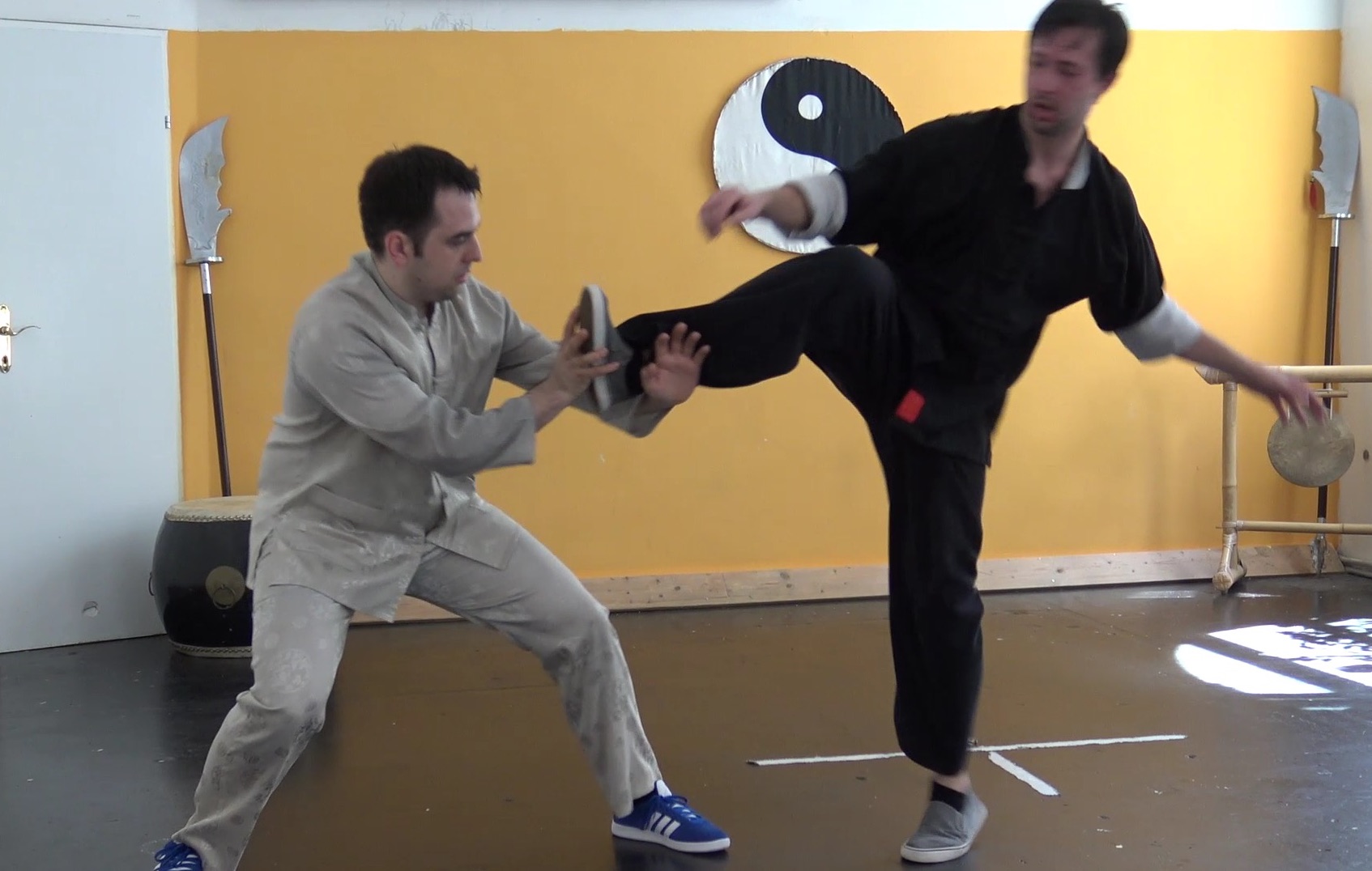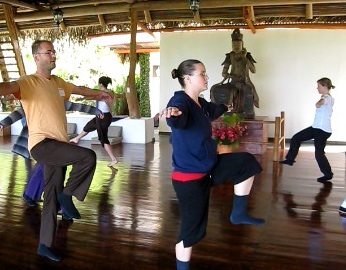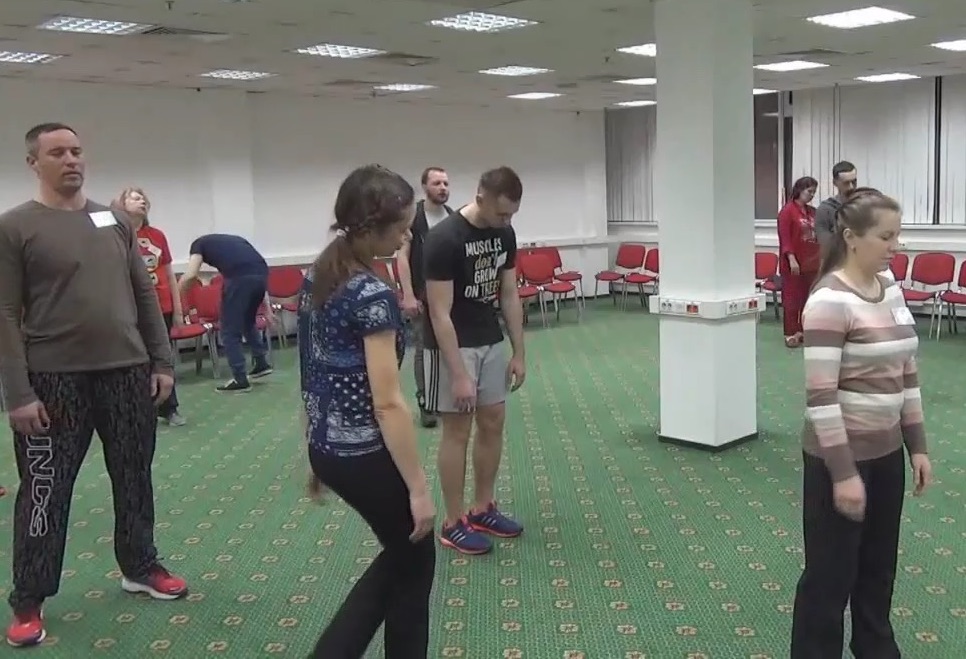SELECTION OF QUESTIONS AND ANSWERS
JUNE 2019 PART 2

It is not just knowing techniques, but having the skills for combat
Question 1
You say that your students can achieve in one month what masters take one year. Why is it so?
— Paul, France
Answer
It is hard to believe, but it is true. Hence, in our school students are reminded against over-training. If students can achieve in one month what masters take one year to achieve, it is easy for the students, especially dedicated ones, to over-train. Over-training occurs when practitioners achieve benefits, but the benefits are too overwhelming for their physical bodies to bear.
There are a few reasons why typical Shaolin Wahnam students can achieve in one month what masters, genuine masters, took one year to achieve. We may sound boastful, but it is good for our students to know so that they realize how powerful our chi kung is. When I was a student I also took one year to achieve what our students can now achieve in one month.
One important reason is that now we differentiate between techniques and skills. Not many people, including masters, do that. Most people think that if they have the techniques they will eventually attain what their arts are meant to give. To us, this is clearly not so. Most students have the right techniques in their chi kung training, but they do not achieve the results practicing chi kung is meant to give. In kungfu, most students practice their techniques correctly, but they cannot use their techniques for combat.
Most other chi kung and kungfu students do not differentiate between techniques and skills. They have the right techniques, but they do not have the skills to generate an energy flow, or to use their techniques for combat.
Not only we differentiate between techniques and skills, we spend a lot of time to develop the appropriate skills. For chi kung we focus on the skills of entering into a chi kung state of mind, and to generate an energy flow. For kungfu we focus on the skills of using techniques for combat and to develop internal force.
The most important reason is that I transmit the correct skills to students so that they can use the skills immediately instead of spending some time, usually a few months, to be skillful. Hence, in my courses chi kung students can immediately enter a chi kung state of mind and generate an energy flow, and kungfu students can experience internal force and apply their techniques for combat.
Typical Shaolin Wahnam students can achieve in one month what masters may take one year. It is therefore very important that the students must guard against over-training.
Question 2
Why are they still students and not called masters?
Answer
Typical Shaolin Wahnam students can attain in one month what masters may need a year. It is worthwhile to justify this claim.
In one month our chi kung students can enter into a chi kung state of mind and generate an energy flow, two very important skills in chi kung training. If masters can do so in one year, it would be considered good results. Many "masters" cannot do so after many years, like ten or twenty years. We call them "masters" out of respect.
In one month our kungfu students can use their techniques for combat and develop internal force. If masters can do so in one year, it would be considered good results. Many "masters" cannot use their kungfu techniques for fighting, and have no internal force. Again, we call them "masters" out of respect.
Then why typical Shaolin Wahnam students are called "students" and not "masters"? The following are some of the reasons.
Typical Shaolin Wahnam students, despite their achievement, still have much to learn. Calling them "masters" would hinder their learning process.
To us to be a master a practitioner has reached a very high level of attainment in his art, besides having a good character. We do not regard some of our instructors as masters, though some of our members are regarded as masters though they may not be instructors.
Because of shallow understanding of an art, the public generally considers the length of time a practitioner has spent in his art when addressing him as a master, but we may not agree with this consideration. For example, the public may address a practitioner who has spent 20 years teaching his art as a chi kung master, though what he teaches is gentle physical exercise and not chi kung.
Although our students may have better attainment in chi kung than this practitioner, they may not have practiced for 20 years. The public may not know that what he teaches is actually gentle physical exercise, and not chi kung. Calling our students "master" would cause misunderstanding and ill-will.

"White Crane Steps on Snow" of 18 Jewels
Question 3
Can we combine an exercise of 18 Jewels with another chi kung exercise?
— Yolanda, Spain
Answer
Yes, you can.
For example you can combine any one exercise from 18 Jewels, like Fish Flip, with another one from any chi kung exercise in our school, like Carrying the Moon from the 18 Lohan Hands. You can perform the two exercises in any order, like Fish Flip first or Carrying the Moon first.
You can also combine any one or more exercises from the 18 Jewels with any one or more exercises from any one or more chi kung exercises from our school in any order, like Drumming Kidneys from 18 Jewels and any exercises from any other chi kung arts like the bird play from Five-Animal Play, and Rhinoceros Looks at Moon from 18 Lohan Arts. But irrespective of the number of exercises you have chosen, the total time is about 10 minutes, unless you are an advanced practitioner where you do not over-train.
Further, you can practice any one or more exercises from 18 Jewels with any one or more exercises in our school, or any one or more activities of your choice. You can, for example, perform Dancing Fairy and Bear Walk from 18 Jewels, and some combat sequences from Shaolin Kungfu or Taijiquan, or go shopping with your friends. The time taken for your chi kung practice is about 10 minutes, and you add the time for your combat sequences or shopping.
Further still, you can combine any one or more exercises from 18 Jewels and any one or more chi kung exercises or any one or more activities you have learnt from other schools. For example, you can combine Turning Hips and White Crane Stepping on Snow from 18 Jewels with any one or more chi kung exercises or activities you may choose. The time taken for our chi kung exercises, irrespective of how many exercises you have chosen, is about 10 minutes, and you need extra time for the other activities.
Chi kung, after all, is like a physical mixture, not a chemical compound.
Question 4
How did masters in the past find out which meridians or which organs were affected for various diseases?
— Santiago, Spain
Answer
Energy masters, like chi kung masters and Chinese medicine masters, found out which meridians and which organs were affected for various diseases from direct experience. In other words, they actually saw which meridians and which organs were affected. This happened not just to one or two masters, but to many masters over a long period of time.
For example, when a patient complained of fear for no apparent reason, a master saw in a deep level of consciousness that the kidney or urinary bladder meridians of the patient were blocked. When another patient complained of anxiety, the master saw that the spleen or the stomach meridians of the patient were blocked. When the blockage was cleared by chi kung therapy, Chinese medical practice or other appropriate means, the patients became well.
After many such experiences, masters recorded their experiences as well as the therapeutic methods, and subsequent people who might not have direct experience could benefit from the records.

Advanced practitioners can go to chi flow without performing any chi kung techniques
Question 5
How do I know that in two years' time my performance of chi kung at 30% can be 300% now?
— Jan, Spain
Answer
Suppose you have 100 units of benefit if you perform your chi kung at your maximum, or at 100%. If you have 100 units of benefit once a while, it is alright. But if you have 100 units of benefit everyday in your regular practice, it may lead to over-training. Your physical body cannot take the tremendous amount of energy suddenly.
You train at 30% of your potential so that your physical body can gradually take the increase of energy due to your training. In two years' time you still regularly train at 30% of your performance. Because of your gradual improvement, your attainment two years later is three times the present attainment level even when you perform at your maximum. In other words, your attainment will be 300% but your present attainment is 100%.
How do you know that your performance at 30% in two years' time is 300% now even when you perform at 100%? It is just an estimate. It may not be exactly 30%, but about 25% or 35%. You may not notice the improvement on a day to day basis because your improvement is gradual, but if you compare two years later and now you can see a difference.
For example, when you read a book now you have to read it a few times before you can understand it, but in two years time you can understand clearly by just reading once. Now you cannot play games because you become tired easily, but in two years' time you can play games easily. You can conclude that you have improved tremendously.
The mention of 300% in two years' time is an estimate. It may be 250% or 350%, or even 500%. But it indicates your improvement.
Question 6
Can advanced practitioners just go to energy flow without performing any chi kung techniques?
Answer
Yes, advanced practitioners in our school can go to energy flow without performing any chi kung techniques. We do this in my Intensive Chi Kung Course, which ranges from learning chi kung skills at a beginner's level to a master's level. You do not need prior chi kung experience to attend the course.
Going to energy flow without performing any chi kung techniques is actually at a master's level. Even many masters in other schools cannot do so: they need to perform chi kung techniques. Often they may not know of their energy flow; they just perform their chi kung techniques.
Nevertheless, performing some chi kung techniques to enter an energy flow generally enables more vigorous energy flow than not performing any chi kung techniques.

When one practices genuine kungfu, good health is intrinsic. There is no need to apply kungfu practice for good health
Question 7
You have mentioned that the four benefits of practicing kungfu are combat efficiency, good health, vitality and longevity. Are they of equal importance?
— Vinko, Czech Republic
Answer
Whether the benefits of practicing kungfu are of equal importance depends on different people. In our school, the main benefits are combat efficiency, good health, vitality and longevity. There are two other main benefits, namely peak performance and spiritual joys.
These benefits are not of equal importance. In our school we place good health first and combat efficiency last. In other words, the first reason we practice kungfu is to have good health, and the last reason is to have combat efficiency. Hence, our kungfu practitioners are not keen in fighting, though they can fight well, but their top priority is to have good health. If I am to list the benefits in order of importance, generally they are good health, vitality, peak performance, spiritual joys, longevity and combat efficiency.
I place longevity just before combat efficiency because our kungfu practitioners are usually young. They have to wait for many years before longevity become more important. For those who are elderly, longevity will be important.
If some of our kungfu students, especially female ones, were to really fight with other martial artists, our students would be beaten. The irony is that our students actually know more of kungfu combat than the other martial artists. Then, why are our students beaten?
It is because they do not place much importance on combat efficiency; they do not practice sufficiently to become skillful. Other martial artists, though they know less of kungfu combat, are ready to take punishment, and they merely exchange blows. However those who practice regularly, including female students, can beat other martial artists comfortably.
Indeed, it is precisely we place good health as our priority, that we practice kungfu as kungfu, including combat application, and not as generously exchanging blows. Our practitioners have to be fit and healthy to practice kungfu. We benefit much from quick reflexes, correct judgment, right spacing and timing and taking responsibilities for our action, which are not only important for combat but also for our daily living.
Our list of benefits is different from most other martial artists. For them their benefits are socialization, winning trophies and demonstration. Good health and combat efficiency are not their benefits, though many of them may think so. They sustained injuries in their free sparring without attending to the injuries, and they merely hit one another without self defence. I wish to mention that how they practice their kungfu or other martial arts is their right, but it is good for our students as well as the general public to know.
Question 8
How do we use our kungfu practice for good health?
Answer
Good health and the other benefits listed by you, which are vitality, longevity and combat efficiency, as well as the other benefits like peak performance and spiritual joys, are intrinsic in genuine kungfu practice. In other words, you don't have to use kungfu for good health and other benefits; the fact that you practice kungfu will naturally give you good health and the other benefits.
Of course you need to practice kungfu correctly and genuinely. If your kungfu practice is correct and genuine, you will have good health and other benefits from your practice without you having to do anything special. If your kungfu level is low, you will take a long time and have little benefits. If your level is high, your good health and other benefits will be much and in a short time. If your kungfu practice is incorrect or not genuine, you will not have good health and the other benefits. Often you have harm.
From the perspective of Shaolin Wahnam, much of the kungfu practiced elsewhere today is incorrect or not genuine. Kungfu practitioners today can be divided into two categories -- those who only perform kungfu forms, and those who use other martial systems for sparring.
Performing kungfu forms alone is not kungfu. Kungfu is meant for fighting, though kungfu practitioners do not want to fight. But practicing kungfu for fighting can derive many benefits that are useful for daily life.
Those who use other martial systems for sparring cannot use their kungfu techniques for combat. They actually cannot defend themselves, and sustain injuries usually left unattended to.
They do not get the benefits of good health, vitality, longevity and combat efficiency from their kungfu training. If they have these benefits, it is because of other factors, like taking other exercise, food supplements, good genes, and fitness.
LINKS
Selected Reading
- History of Chi Flow in Shaolin Wahnam
- Can Chi Kung Cure Cancer?
- Frequently Asked Questions on Taijiquan
- Size. Gender and Age are Not Important in Kungfu Combat
- The International Shaolin Wahnam Family
